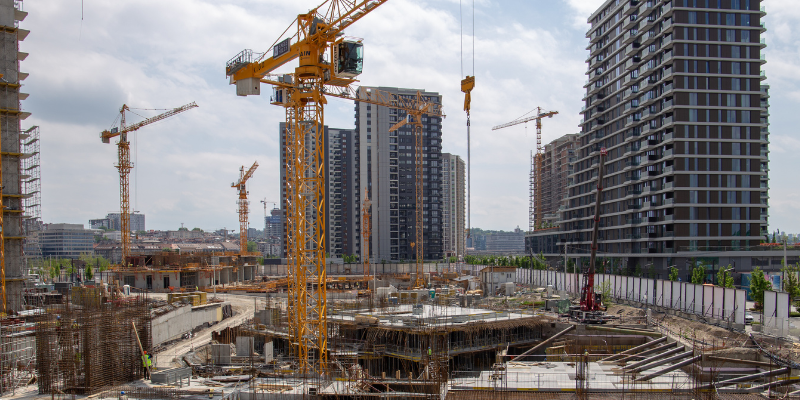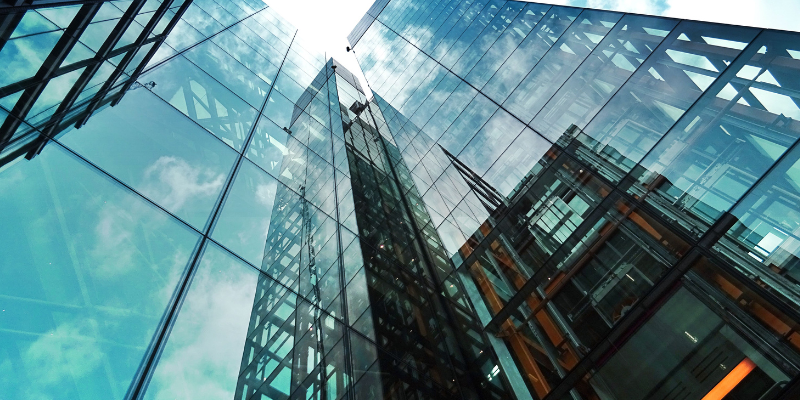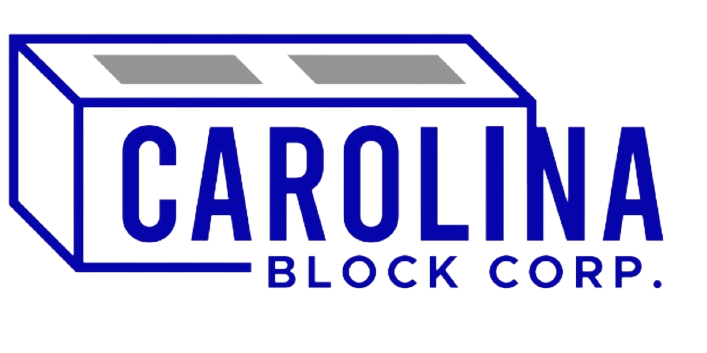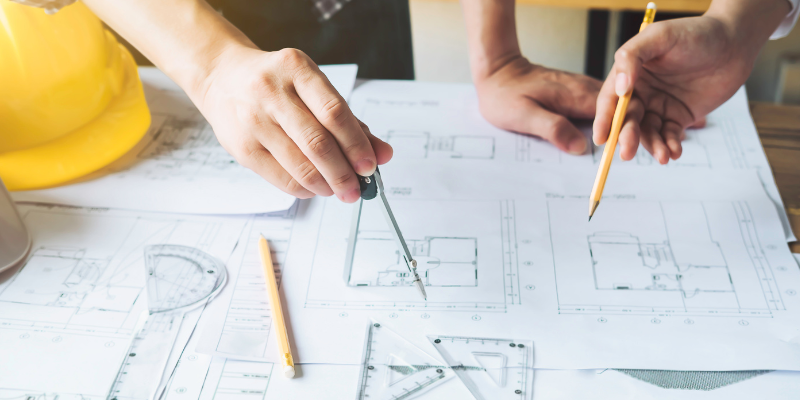When embarking on a new construction project, there are countless factors to consider and potential challenges to overcome.
Table of Contents
ToggleFrom securing reliable suppliers to ensuring the highest quality construction materials, managing a large construction project can be a daunting task.
However, by unlocking the five secrets to success in construction projects, you can navigate these obstacles with confidence and achieve your project goals efficiently and effectively.

Establishing a Clear Vision and Comprehensive Planning
The foundation of any triumphant construction project hinges on the crystallization of a vision and the meticulous orchestration of planning.
The initial stride toward manifesting this vision involves a deep dive into the intricate details that define the scope and ambition of your project.
According to a study by the World Economic Forum, incorporating sustainable design into construction projects could save companies around $1.2 trillion globally by 2030 through improved energy efficiency and reduced material waste.
This is not merely about sketching the outlines but about painting the full picture, integrating the nuances of timelines, financial frameworks, and the ultimate objectives you aim to achieve.
It’s a process that transcends simple goal setting, evolving into a strategic roadmap that guides every step of the construction journey.
Diving deeper, comprehensive planning emerges as a critical tool, not just for aligning the stakeholders but also for laying down a framework that anticipates and mitigates potential roadblocks.
The devil, as they say, is in the details.
This planning phase is where you build your defense, preparing for the unforeseen with as much diligence as expected.
By meticulously detailing each segment of the project, from procurement to the final handover, you craft a narrative that is both ambitious and grounded in reality.
A pivotal aspect of this process involves setting realistic timelines that respect the complexity and scale of the project.
It’s about balancing ambition with feasibility, ensuring that deadlines inspire progress rather than precipitating haste.
Similarly, budgeting goes beyond mere cost estimation. It is about creating a financial blueprint that maximizes resource efficiency, ensuring that every dollar spent is a step toward achieving your project’s goals.
Moreover, this stage is about fostering collaboration and consensus among all project stakeholders.
From investors to architects, from suppliers to the construction crew, everyone’s input is invaluable.
This collaborative ethos ensures that the project’s vision is not just shared but also shaped by the collective expertise and insights of the team.
It’s about transforming individual contributions into a cohesive force that propels the project forward.
Finally, comprehensive planning is an iterative process. It demands flexibility to adapt and evolve in response to new insights and changing circumstances.
This dynamic approach ensures that the project remains resilient and capable of navigating the complexities of construction with agility and foresight.
In essence, establishing a clear vision and comprehensive planning is akin to charting a course through uncharted waters.
It demands a balance of ambition and pragmatism, a confluence of individual expertise and collective effort.
It’s about crafting a roadmap that is not only clear but also adaptable, guiding the project from inception to completion with strategic insight and collaborative spirit.

Cultivating Robust Supplier Relationships
In the intricate dance of construction project management, the partnership with building material suppliers plays a pivotal role, far beyond the transactional exchange of goods for payment.
It is a nuanced relationship that, when nurtured with care and strategic foresight, becomes a cornerstone of project success.
The key to unlocking this potential lies in understanding the mutual benefits of robust supplier relationships and implementing practices that foster trust, reliability, and collaboration.
Embarking on this journey requires a proactive approach to supplier engagement. Early involvement of suppliers in the planning stages offers a dual advantage.
It allows for a more accurate assessment of construction material needs and availability, reducing the risk of delays.
Moreover, it opens the door to suppliers’ expertise, providing valuable insights that can enhance both the efficiency and quality of the construction process.
This collaborative ethos transforms suppliers into project allies, invested in the success of the endeavor as much as the construction team.
Communication is the lifeblood of any strong relationship, and this holds for supplier partnerships.
Establishing regular, open lines of communication ensures that both parties are aligned on expectations and can quickly address any challenges that arise.
This is not merely about conveying needs and resolving issues; it’s about creating a dialogue that fosters innovation and continuous improvement.
Through this ongoing conversation, suppliers can offer alternative solutions and innovations that may not have been previously considered, adding value beyond the immediate project.
The pursuit of competitive pricing should not overshadow the importance of quality and reliability in a construction project
While negotiating favorable terms is a necessary aspect of project management, focusing solely on cost can be a shortsighted strategy.
The true value of a supplier relationship is found in the reliability of their service and the quality of their materials.
It is a delicate balance that, when achieved, ensures that cost savings do not come at the expense of project integrity or timelines.
Developing robust supplier relationships also means cultivating loyalty and continuity. Recognizing and rewarding reliable suppliers with continued business fosters a sense of partnership and commitment.
This loyalty is not just beneficial in terms of service and pricing; it creates a buffer against market fluctuations and shortages, ensuring priority access to essential materials and services.
In essence, the art of cultivating robust supplier relationships is about seeing beyond the transactional.
It’s about building partnerships that are based on mutual respect, shared goals, and a commitment to excellence.
By embedding these principles into the fabric of supplier engagement, a construction project can achieve efficiency, quality, and reliability that sets them apart in a competitive landscape.
Emphasizing Quality from the Ground Up
In the realm of construction, the pursuit of quality is not just an ideal; it’s a foundational principle that informs every decision, from the selection of materials to the choice of contractors.
Quality is the linchpin that ensures the longevity and durability of a structure, transcending the immediate aesthetics to encompass the very integrity of the project.
It’s an investment in the future, safeguarding against the time and resources that might otherwise be consumed by repairs and maintenance.
The emphasis on quality starts with an unwavering commitment to sourcing the finest materials available.
This approach is not merely about cost but about recognizing the intrinsic value that high-caliber materials bring to a project.
Quality materials are the building blocks of every construction project
They are the building blocks of excellence, ensuring that the finished structure stands as a testament to durability and craftsmanship.
This commitment extends to the engagement of skilled professionals whose expertise and dedication to their craft ensure that the execution matches the ambition of the project design.
Quality, however, is not a static measure but a dynamic standard that must be maintained and verified at every stage of the construction process.
It requires rigorous oversight and meticulous attention to detail, ensuring that every aspect of the project, from the foundational work to the finishing touches, adheres to the highest standards.
This vigilance is a proactive measure, a safeguard against the complacency that can compromise the project’s integrity.
The pursuit of quality is also an exercise in foresight, anticipating the future needs and challenges that the structure will face.
It’s about building with resilience, crafting spaces that are not only beautiful but also adaptable, capable of standing the test of time and technology.
This forward-looking approach ensures that the project remains relevant and functional, serving its purpose well beyond the immediate horizon.
Moreover, emphasizing quality is a statement of values.
It reflects respect for the project’s stakeholders, from the clients who entrust their visions to the construction team to the end-users who will inhabit and utilize the space.
It’s a commitment to excellence that resonates with every individual involved, inspiring pride and a sense of accomplishment.
In essence, emphasizing quality from the ground up is a holistic approach that integrates the best of materials, craftsmanship, and foresight.
It’s about creating structures that are not just built but are crafted, with an eye towards sustainability, functionality, and beauty.
It’s a philosophy that drives the construction process, ensuring that the end result is not just a building but a legacy.

Advanced Project Management Techniques
Navigating the complexities of a construction project demands more than just a conventional approach to project management; it requires a sophisticated blend of technology, methodology, and foresight.
In this age of rapid technological advancement, leveraging digital tools and software isn’t merely a convenience—it’s a necessity.
These advanced resources empower project managers with real-time insights and data analytics, ensuring that every decision is informed, strategic, and precise.
The integration of digital tools into project management transcends basic tracking and communication.
It encompasses sophisticated platforms that facilitate detailed project scheduling, budget tracking, resource allocation, and risk management.
These platforms act as a central hub for all project-related information, making it accessible to every stakeholder, anytime and anywhere.
This transparency not only streamlines workflow but also fosters a culture of accountability and collaboration among team members.
Furthermore, the adoption of agile project management practices signifies a departure from the rigid, linear approaches of the past.
In a landscape where change is the only constant, agility offers the flexibility to pivot and adapt to new challenges, constraints, and opportunities.
This iterative approach, characterized by short planning cycles and frequent reassessment, allows project managers to make incremental improvements and adjustments, ensuring that the project evolves in alignment with the changing dynamics of the construction environment.
But advanced project management is not solely about the tools and methodologies employed; it’s also about cultivating a mindset geared towards innovation and efficiency.
It challenges project managers to think beyond conventional boundaries, encouraging them to explore new strategies, technologies, and collaborative practices.
Learn to mitigate potential risks
This proactive stance not only mitigates potential risks but also uncovers opportunities for optimization and enhancement across all phases of the project.
In the domain of construction, where the margin for error is slim and the stakes are high, embracing advanced project management techniques is not just an option—it’s a strategic imperative.
It is the key to unlocking higher levels of efficiency, quality, and competitiveness, ensuring that each project not only meets but exceeds the expectations of all stakeholders involved.
Through the adept application of technology and agile practices, project managers can navigate the complexities of modern construction with confidence and precision, paving the way for success in an ever-evolving industry.
Continuous Learning and Adaptation
The construction industry landscape is perpetually shifting, marked by an ever-present flux of new methodologies, materials, and technological innovations.
This environment demands more than just adherence to established protocols and practices; it calls for an unyielding commitment to growth and flexibility.
The key to mastering this realm lies not in a static accumulation of knowledge, but in fostering a culture of continuous learning and adaptation.
Every project has a lesson
At the heart of this approach is the understanding that every project, with its unique challenges and successes, serves as a repository of invaluable lessons.
These lessons, when approached with curiosity and openness, can significantly refine processes, enhance efficiency, and elevate the quality of outcomes in future endeavors.
It’s about constructing a feedback loop where experiences inform actions, turning potential setbacks into stepping stones for improvement.
Embracing continuous learning also entails a proactive pursuit of knowledge and skills that extend beyond the immediate requirements of current projects.
This could manifest in various forms, from engaging with the latest industry research and trends to participating in workshops, courses, and seminars that broaden one’s perspective and toolkit.
It’s about being anticipatory, preparing not just for the challenges of today but for the innovations and opportunities of tomorrow.
Learning and adaptation are crucial in every construction project
Adaptation, in this context, is the natural counterpart to learning. It’s about applying acquired insights in real time, tweaking strategies and processes in response to both the anticipated and the unforeseen.
This agility enables construction professionals to navigate the complexities of their projects with a dynamic approach that is responsive to change, rather than rigidly adherent to a predefined plan.
Moreover, this ethos of learning and adaptation fosters a culture that values creativity, collaboration, and problem-solving.
It encourages teams to look beyond conventional solutions, to experiment and innovate in pursuit of excellence.
In doing so, it not only enhances the capacity for successful project completion but also contributes to the professional growth and fulfillment of all involved.
In sum, the secret to navigating the ever-evolving landscape of construction lies in embracing the journey of continuous learning and adaptation.
It’s about building a foundation on the principles of curiosity, resilience, and innovation, ensuring that with each project, professionals are not just constructing edifices but are also constructing a legacy of knowledge and expertise that propels the industry forward.

